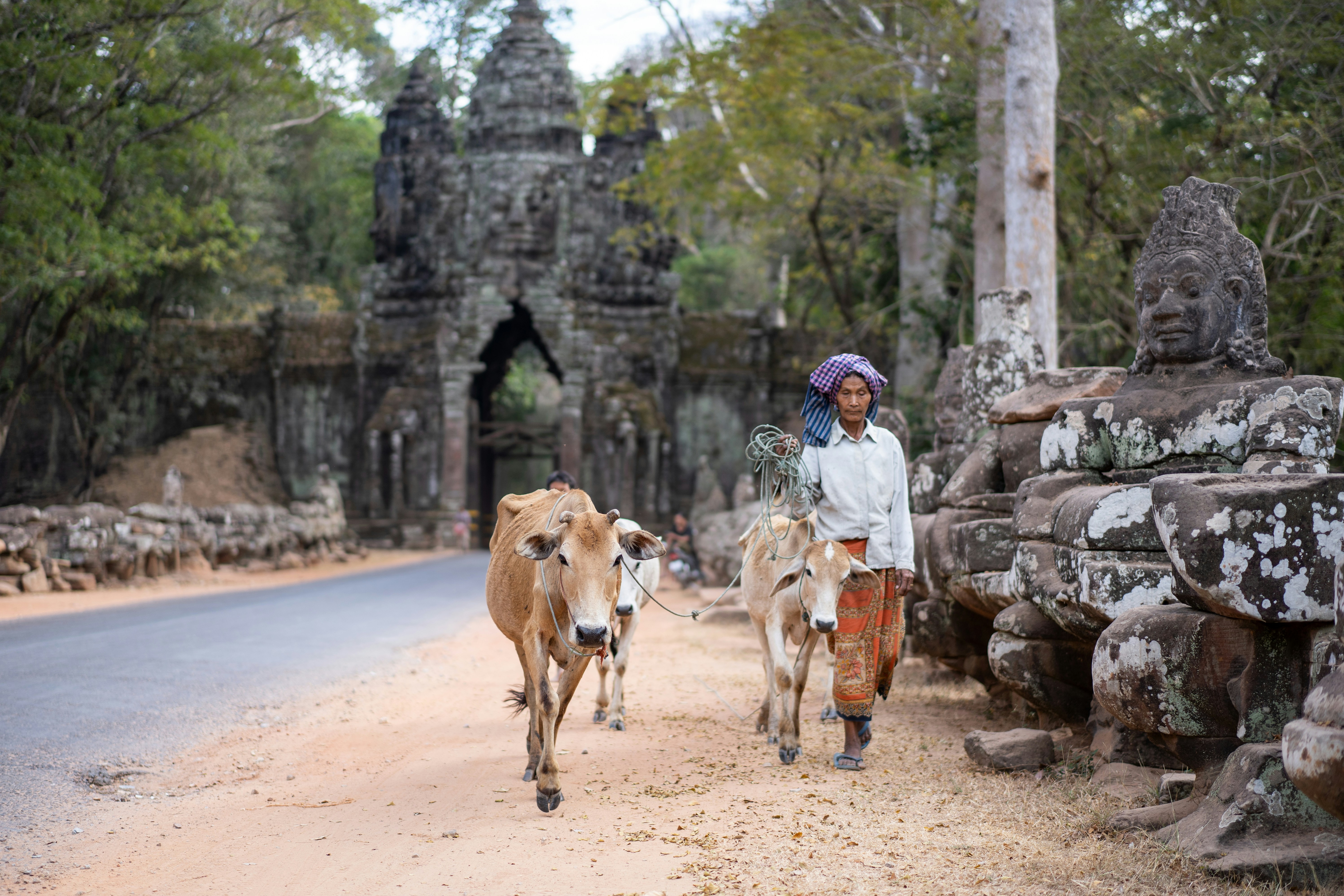
Cambodia
Travel Guide
Modern Cambodia is the successor state to the powerful Khmer empire, which, during the Angkorian era, ruled what is now Thailand, Vietnam, and Laos. The remains of this empire can be seen at the mythical temples of Angkor, the most impressive monuments in Southeast Asia. These sites are matched only by several other spots on earth, such as Machu Picchu or Petra.
Cambodia highlights
Not sure where you want to go yet? Get inspired and browse the best places to visit in Cambodia
Browse some of our Cambodia itineraries
Get excited and browse our selection of our favorite hand made tours from Cambodia. From romantic honeymoons to family-fun; these are completely flexible and arranged to your needs.
Why Visit Cambodia?
Breathe in enchanting landscapes, surround yourself with a rich culture and history. Feel the natural hospitality of Cambodians. You can spend a few days here to check Angkor ruins off your bucket list before heading to Thailand, Laos, and Vietnam. Or take your time and immerse yourself to completely experience this cultural, culinary, and historical gem.
Angkor at Siem Reap Ruins
These stunning temples are the primary draw for most travelers. The expansive complex in Siem Reap encapsulates the incredible architecture of the Khmer empire. Angkor Wat, Bayon Temple, and Ta Prohm are a few of the temples and monuments you can explore; walk or rent a cycle to go through the historical trails and luscious jungles.
Modern History & Capital City of Phnom Penh
The Khmers have been to hell and back and years of struggle and instability left them with a strong work ethic and a fiercely optimistic spirit that is infectious. Cambodia's more recent dark era of the 1970s can be explored around Phnom Penh at the Tuol Sleng Genocide Museum (S-21 Prison) and the Killing Fields.
Other sites near the capital are the National Museum of Cambodia and Silver Pagoda, also known as the Temple of Emerald Buddha.
Great Food & Night Markets
In both Siem Reap and Phnom Penh, there are bustling night markets with abundant, savory food. The staples are rice and noodle dishes and the Cambodian specialties are beef, fish, crab and the distinctive Kampot pepper. A foodie’s delight and everything is cheap. Also abundant are regional tropical fruits such as mango, dragonfruit, and pineapple. If you are feeling really adventurous, you'll be tempted with some truly dare-worthy snacks.
When to Visit Cambodia
Although Cambodia is plenty warm all year round and holds its appeal for warmth-seekers, it does have seasonal fluctuations to be aware of.
March – May
While the temperatures and humidity are higher during this rainier period, the countryside will be most lush. Mornings are usually drier and afternoon time is more likely to have rainfall. The rain can cause problems with logistics if you are traveling extensively; however, for our highlighted areas, this is not an issue and things will be less crowded.
November – February
For temple and city exploration, things will have cooled off. The months of December and January generally are the busiest time so planning further in advance is important to experience the highlights in the more temperate season.
We believe travel is more than ticking destinations off a list – it’s about discovering new places deeply, feeling connected wherever you go, and knowing you have a trusted team behind you every step of the way.



